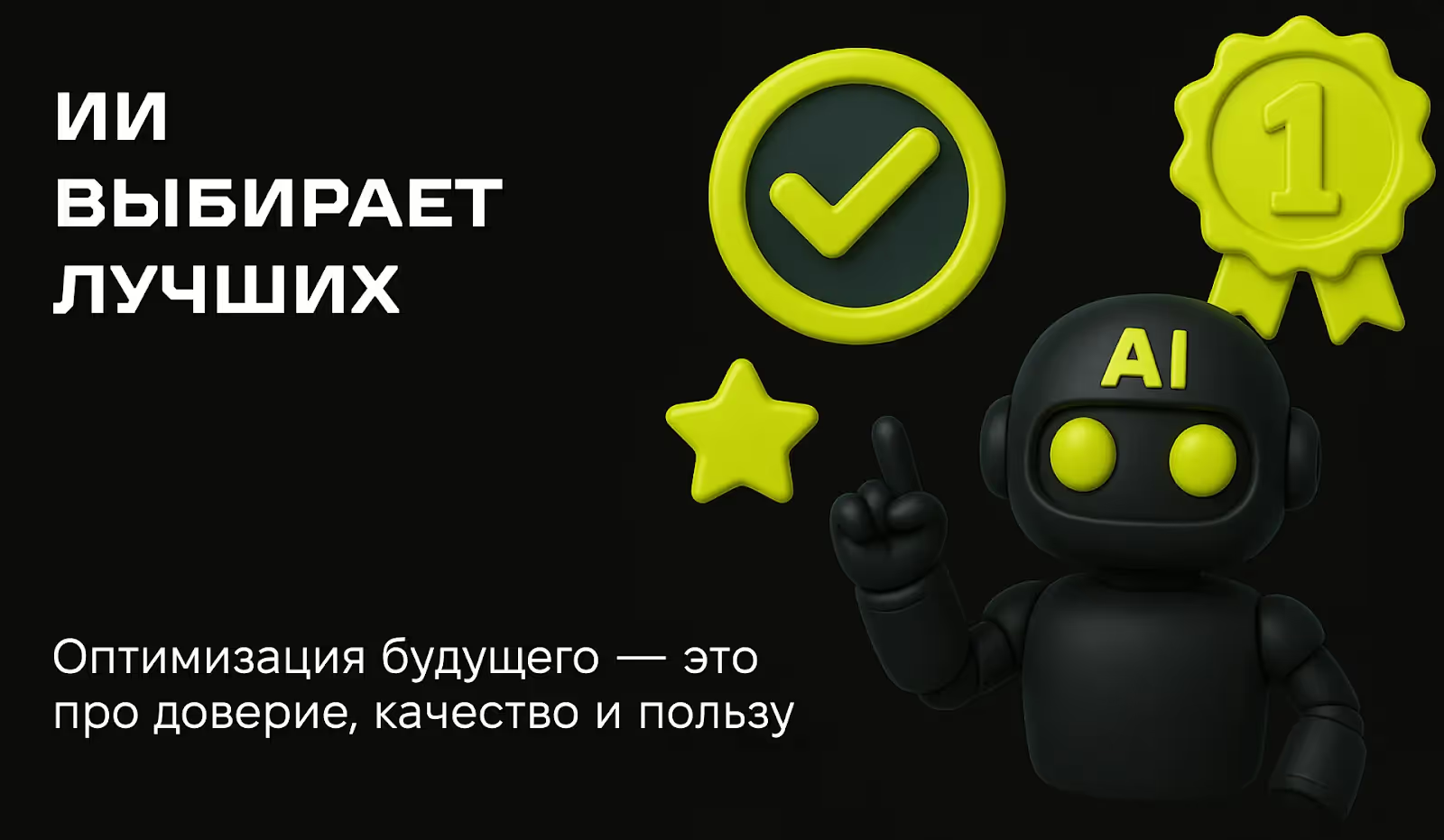Google has officially launched AI Overview, a new search answer system where artificial intelligence itself generates a short review from AI instead of standard search results. Now users can get a ready-made answer right at the top of the page without going to the site. That is why the question of how to get into AI Overview has become a key question for everyone who works with content and SEO.
AI Overview is not just another algorithm update. This is a new era of Google search results, in which the search engine independently summarizes information from various sources, creating a response in the format of an “AI review”. From now on, websites compete not only for a position in the TOP 10, but also for a presence in Google's AI Overview itself, which appears above all results.
For SEO professionals and business owners, this means new rules of the game. If it used to be enough to optimize a page for keywords, now it's important to understand exactly how AI chooses content for its review. In this article, we'll look at what AI Overview is, how it works, and what steps can help your site get into this new search format.

AI Overview (translated as AI review) is Google's new search results format created using generative artificial intelligence. When a user enters a query, Google doesn't just show links, but generates a short explanation from AI collected from the most relevant pages. It displays key facts, conclusions, and even tips — all in a concise, easy-to-read form.
Google introduced this feature as part of an updated search engine called Search Generative Experience (SGE), and later changed its name to Google's AI Overview. This update is already being gradually implemented in different countries and is gradually replacing the classic search results.
The algorithm works like this:
For example, if you're looking for “how to sleep better,” instead of a dozen articles, you'll see a short AI review with tips taken from reliable medical sources. Links to sites from which Google took information will be shown next to it.
This is a fundamental change for SEO. Now the site's task is not just to get into the TOP 10, but to become a source referred to by Google's AI Overview. And this is what opens up a new direction — AI SEO, where the focus is shifting from positions to visibility in AI results.

The advent of AI Overview has dramatically changed the approach to content optimization. If SEO used to focus on positions in the search results, now the main goal is to become the source that Google uses to create an AI review. This means that not only keywords have become important, but also the context, text structure, author's expertise and the accuracy of the information.
AI SEO is based on ensuring that content is not just optimized, but understandable for artificial intelligence. Google now rates texts based on their depth of explanation, structure, and usefulness. Content with clear answers to “what,” “why,” and “how” queries are significantly more likely to make it into Google's AI Overview.
To adapt to this model, you need to:
AI Overview SEO algorithms favor sites that demonstrate expertise. This means:
Google strives to ensure that AI reviews are based only on reliable information. Therefore, even technically perfect texts without authority are now less likely to get into the new search results.
AI Overview also influences how people consume content. Most users get the main answer right at the top of the page, so the number of clicks is reduced. But those who follow links from AI Overview usually have a high level of interest because they've already read the short resume and want to know the details.
This means that even if search traffic decreases, its quality and conversion rates increase. Therefore, the goal of modern SEO is not to maintain old positions, but to become part of the AI response where the most valuable traffic comes from.

Getting into Google's AI Overview means not just appearing in the search results, but becoming one of the sources that artificial intelligence trusts. To do this, you need to understand exactly how Google selects content for review from AI. Below are specific steps that will help the site get into the new search results format.
AI Overview creates short summaries, so Google selects texts that respond to the query in a structured manner. The content should be structured according to the following principle: request → short answer → extended explanation.
Recommendations:
This will help AI understand what your material is about more quickly and incorporate it into AI Overview SEO.
Artificial intelligence is better at processing structured content. To be reviewed by AI, the text must be technically clean and algorithmically understandable.
Pay attention to these elements:
Google only selects information from trusted sites. To get into Google's AI Overview, your content must demonstrate expertise:
For sensitive topics — medicine, finance, education — it is especially important to have E-E-A-T signals: expertise, experience, authority and trust.
Google creates AI Overview specifically for informational queries: “what is...”, “how does it work...”, “why...”, “when...”.
Optimize pages for these user intentions (search intent) by adding key variations:
Even the best content won't appear in AI Overview if the site has technical issues.
Keep track of which pages appear in AI Overview in your niche. Analyze competitors, their content structure, text length, and query types. Then adapt your content to the patterns you find.
Getting into AI Overview is not a one-time action, but a constant effort to improve the quality of content and the credibility of the site. Google's algorithm learns every day, so the main thing is to write texts that actually answer the user's query, and not just contain keywords.

AI Overview has changed the very philosophy of SEO. If earlier the main goal was to get into the TOP 10, now it's important to create content that helps AI form the best answer. This means that your site should be as clear as possible — both for the user and for the algorithm.
Texts created “for SEO” don't work anymore. Google's AI Overview doesn't show content that looks like a set of key phrases.
The optimal strategy is:
Google is actively displaying structured data in AI Overview. Use schema.org to name articles, authors, FAQs, and reviews. This will help the system better understand where the question is in the text and where the answer is.
Q&A blocks (“Question and Answer”) have a high chance of being reviewed by AI, especially if the answers are short, accurate, and relevant to the search query.
Monitoring search queries for which AI Overview has already appeared provides a clear understanding of how AI generates answers.
It is recommended to:
Expertise, Experience, Authoritativity, and Trust have become the main criteria for AI SEO.
To reinforce these signals:
This will not only help you get into AI Overview, but also increase the site's visibility in organic search results.
Google is constantly expanding AI Overview with new formats - interactive cards, recommendations, links to videos. Content that's ready for this now will take advantage tomorrow.
Develop analytical thinking in SEO: don't just react to changes, but predict how AI will transform search in your niche.
AI Overview isn't a threat to SEO, it's the next level. It filters out superficial content and brings to the top those sites that are really useful.

AI Overview is not just a new search format, but a turning point in SEO development. Now the site's main goal is not to come out on top, but to become a source that AI trusts. Google's algorithms focus less and less on keyword frequency and more on the depth, structure, and reliability of information.
Whoever is the first to adapt to the new rules will win. Optimizing for Google's AI Overview requires a combination of classic SEO, expertise, and an understanding of how the algorithm “thinks”. This is not about tricks — this is about quality, accuracy and human benefits.
The future of SEO is here. And it belongs to those who are not afraid to teach artificial intelligence to trust their own content.
Submit a request, our head of analytics will contact you and show you how we will achieve results for your business